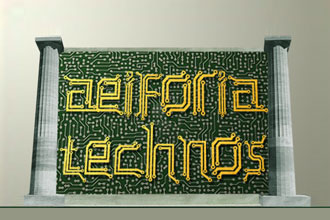Sensing Big Data — Good or Bad for Design
 As we keep on moving into the ever connected world of the Internet of Everything we are generating mountains of data — Big Data as it is known. The main way we collect this data is through the intensive use of sensors which can read a multitude of parameters within a variety of situations. These sensors can simply sit back and passively collect or can actively change in response to the environment in which they reside.
As we keep on moving into the ever connected world of the Internet of Everything we are generating mountains of data — Big Data as it is known. The main way we collect this data is through the intensive use of sensors which can read a multitude of parameters within a variety of situations. These sensors can simply sit back and passively collect or can actively change in response to the environment in which they reside.
At the onset this would appear to have many benefits to us as humans and the world in which we live, work, and play. It has the potential to simplify things for us that otherwise would be arduous in nature and has the ability to tailor our experience based on the data collected. But how this is implemented is either good or bad design.
Where the challenge lies ahead is in the environment in which we place these sensors may not be the right environment and the reason for collecting data my not necessarily be a benefit. As someone in the Information Communications Technology (ICT) industry, Big Data is always present in my conversations particularly when it comes to designing smarter buildings which can increase efficiency and provide a lower carbon footprint. The questions that need to be asked are the “why” and the “how.” The last thing anyone should be doing is selling yachts to people who can’t afford groceries and just because we can doesn’t mean we should.
Most cities and the buildings within them are ancient in terms of being able to respond to technology. Would it be better to find a large plot of land and decide to start a major metropolis from scratch? Today’s cities evolve, expand, and develop organically without much in the way of disruptive technology interfering. City leaders recognize that their cities were designed for smaller numbers of residents and more stable environments but have also seen the need to modernize to meet demand and prevent a collapse of population and economic stability by creating “Smart Cities.” To do this effectively this should require an intense focus on city planning, design tools, and engineering practices that can create the best value so that we see through good design an increase in sustainability and resiliency as we wade into the future not just have a shotgun approach throwing technology in for technology sake. This relies on a keen sense of what the data infrastructure should be which will ultimately be the biggest disruptor and expense as gadgets come and go but rely on the IT infrastructure often to operate. This also relies on a selective approach to the use of sensors and big data. It may be more efficient to rely on sensors, for instance, to manage storm runoff or to turn off street lamps but not efficient in other areas where the benefit may not provide the ROI.
Hollywood has played well into providing us reams of fodder for high tech utopian societies where Captain Picard can magically get his Earl Grey tea hot through the strategically located replicator that uses sensors and data to know just how he likes it and what it is. Pixar’s WALL-E and its idyllic society floating around on large chaise lounges with ads streaming in their faces show the benefits and challenges of this smart world full of data and consequences. Sometimes smart is not the best approach. The use of sensors and Big Data has become the steamroller to kill the cockroach and often we want to flatten everything in our path.
What will truly benefit and advance our world knows how to apply sensors and data in a strategic way that provides meaningful information. This starts by recognizing the cost of Big Data in its entirety. There is cost in implementing the sensors, collecting the data, storing the data, interpreting the data, and lastly making that interpretation useful and meaningful in some way. What we want to avoid is being a sensor and data happy world without recognition of the consequences much like the trash created in WALL-E. These are not evil concepts but realistic ones that need to be considered in deciding the design of these systems.
Even on a more micro scale within an office environment, shopping center, or school there is good and bad use of sensors and Big Data. Within a particular built environment strategically well thought out sensors to collect appropriate data in a meaningful way using the right infrastructure should be the design goal rather than a broadcast, put-a-sensor-on-everything-just-in-case approach for good design. Having a strategy and including qualified ICT industry professionals early in the conversation will help in heading down the path of good design over bad. Having clear objectives and understanding the ramifications of Big Data and its requirements produce the best results in a cost effective manner.
Raymond Kent is the managing principal of Sustainable Technologies Group, LLC specializing in technology systems for the performing and cultural arts, healthcare, government, higher education and corporate markets. He is a co-author of the STEP rating system and serves as the chair of the Technology Task Force for the STEP Foundation. Raymond received the 2012 InfoComm Sustainable Technology Award and is involved with the Center for Sustainable Practice in the Arts.





